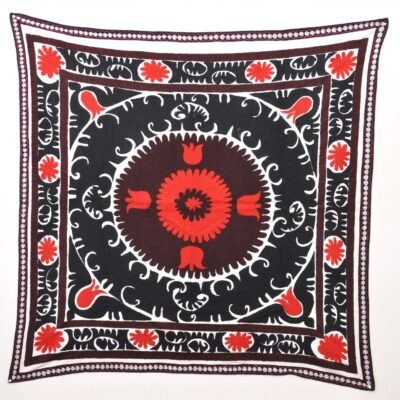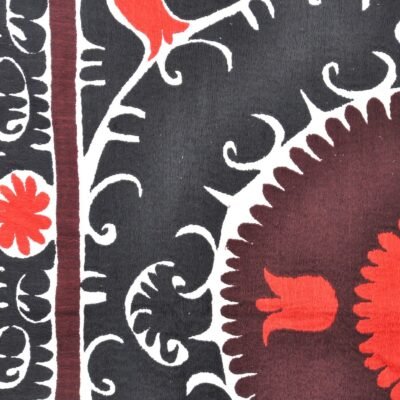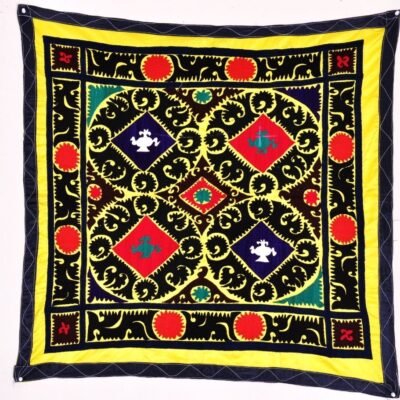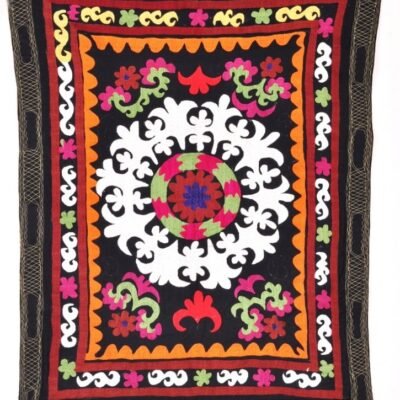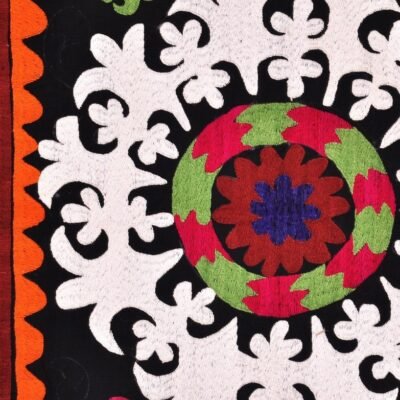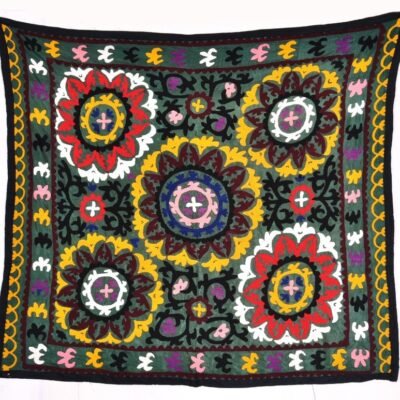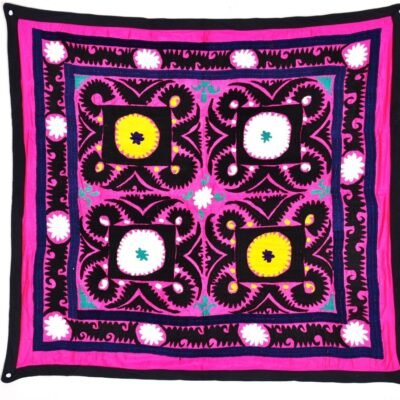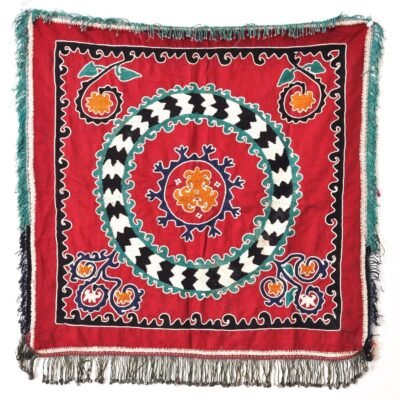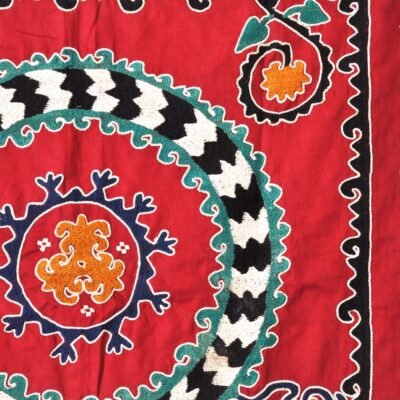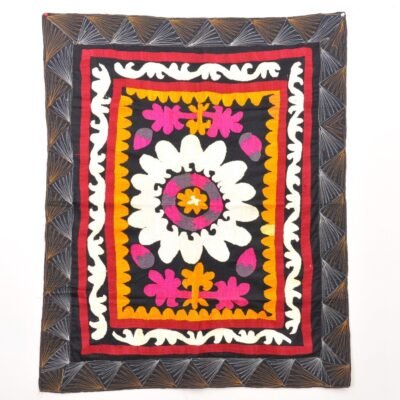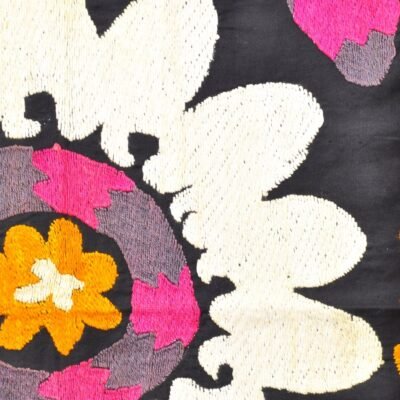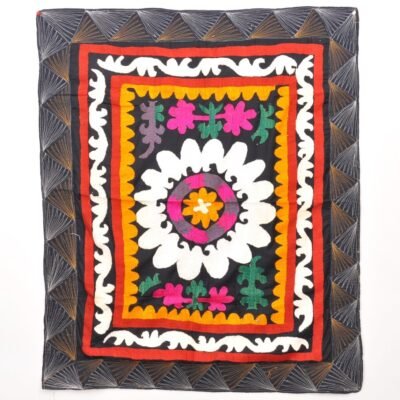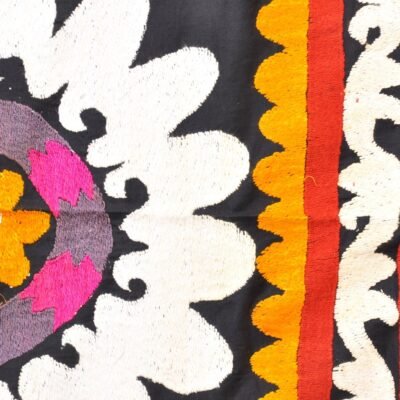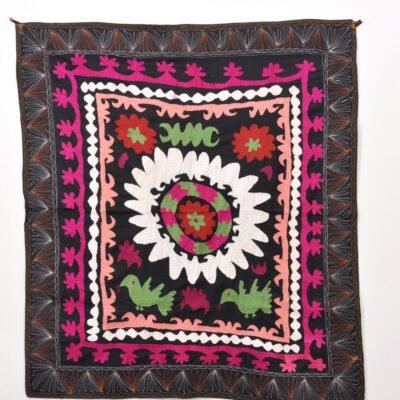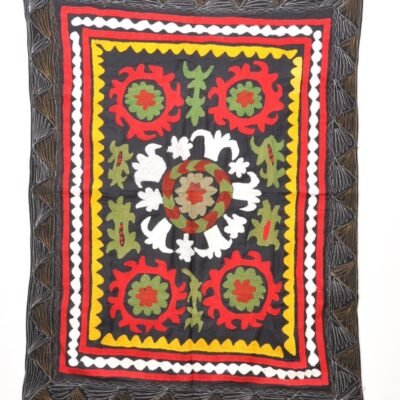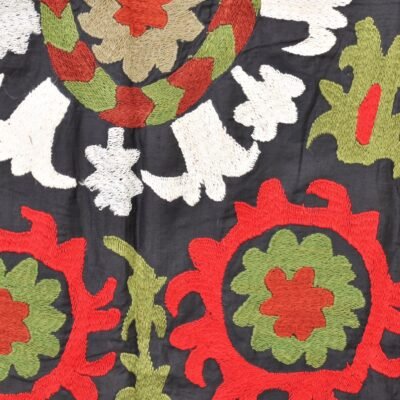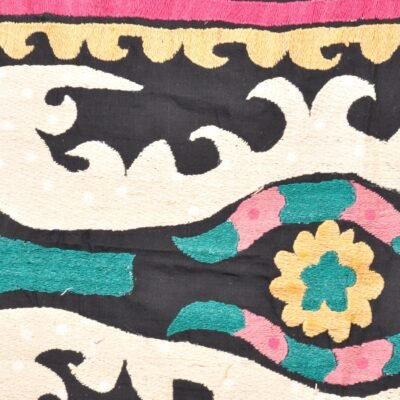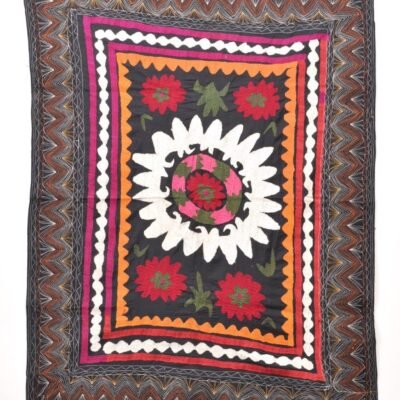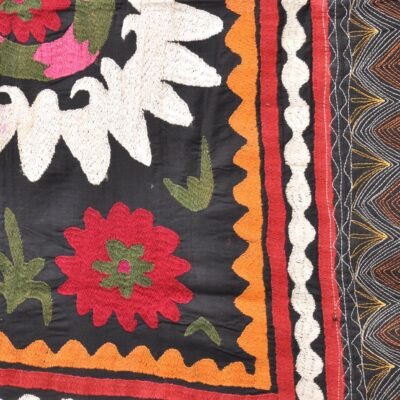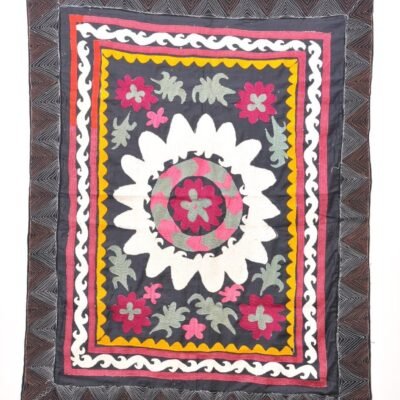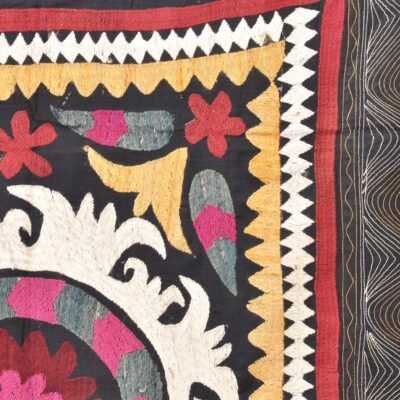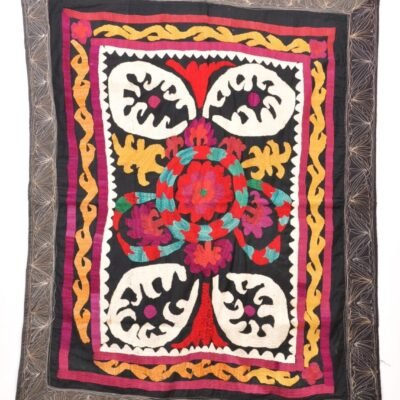A small vintage Suzani is more than a decorative textile—it’s a finely embroidered piece of history that reflects the artistic traditions of Central Asia. Handcrafted by women across generations, these textiles carry intricate motifs stitched with silk threads and natural dyes.
Small Vintage Suzani: Discover Rare Textile Art from Central Asia
In the world of handcrafted textiles, few pieces carry the cultural depth, symbolic beauty, and artistic legacy of a small vintage Suzani. Whether displayed as wall art, draped over furniture, or carefully stored as a collectible, vintage Suzani fabrics are prized by collectors, interior designers, and textile enthusiasts alike.
If you're researching the best Suzani options to buy—especially smaller, older, and authentic pieces—this article provides a complete overview of their history, regional styles, collectible value, and where to find genuine items.
What is Suzani?
Suzani refers to traditional, hand-embroidered textiles from Central Asia, particularly Uzbekistan, Tajikistan, and parts of Kazakhstan. The term comes from the Persian word suzan, meaning “needle,” referencing the needlework techniques used in their creation. Originally crafted by women as part of a bride’s dowry, each piece was made to bring beauty, protection, and good fortune to the home.
History of Suzani
Suzani embroidery dates back to at least the 15th century, though many scholars believe it has earlier roots linked to nomadic tribes. The Silk Road served as a key conduit for the spread of Suzani styles, motifs, and dyeing techniques. As families passed down these traditions, the patterns and threads evolved to reflect local beliefs and social customs.
- Pre-19th Century Suzani: Rare and museum-quality, these are often incomplete panels or fragments due to their age.
- 19th to early 20th Century Suzani: These are considered “vintage” and represent the most collectible era, balancing traditional techniques with well-preserved materials.
- Post-1950 Suzani: Often produced during the Soviet era, these tend to have simplified motifs and synthetic threads but are still of interest to entry-level collectors.
Regional Types of Suzani
Each region in Uzbekistan developed its own distinct style of embroidery and motifs. Understanding these differences can help buyers identify the origin and authenticity of a small vintage Suzani:
- Bukhara Suzani: Known for fine silk threads, dense floral designs, and bold sun medallions (shamsa). These are among the most sought-after by collectors.
- Tashkent Suzani: Typically more geometric, often with repeating vine and flower borders.
- Shahrisabz Suzani: Features vivid red and yellow tones, with stylized floral and fruit motifs.
- Samarkand Suzani: Often larger pieces, but small fragments or borders are collected for their symbolic pomegranates and tree-of-life motifs.
- Nurata Suzani: Famous for distinctive pink hues and small-scale floral motifs—ideal for wall hangings and smaller textiles.
What Makes a Suzani “Vintage”?
In textile collecting, “vintage” Suzani generally refers to pieces created between the late 1800s and mid-1900s. These works are prized for:
- Natural dyes that have aged beautifully
- Silk or cotton threads that reveal the artisan’s skill
- Regional authenticity, often traced through stitching techniques and motifs
- Handwoven base fabrics, unlike the machine-woven cloth seen post-1970
Small vintage Suzani pieces (under 120 cm) are especially valued due to their versatility in decor and their collectibility—they are often easier to frame, transport, and preserve than large panels.
Suzani in Museums and Private Collections
Authentic vintage Suzani textiles are part of several major museum collections:
- The Victoria and Albert Museum (London) holds several pieces from 19th-century Bukhara and Shahrisabz.
- The Textile Museum (Washington, D.C.) features Suzani examples in its Central Asian collection.
- The Museum of Applied Arts (Tashkent) houses one of the most important public collections of historical Uzbek embroidery.
Private collectors across Europe, Japan, and the U.S. also curate small Suzani panels, especially rare 19th-century ones. Many collectors seek signed pieces, pieces with unusual dye combinations, or items from specific master workshops in Bukhara or Samarkand.
Buying Guide: How to Choose a Small Vintage Suzani
When shopping for a small vintage Suzani, especially online, consider the following:
- Age & Provenance: Look for pieces dated to the early 20th century or earlier. Ask sellers about the textile’s origin.
- Material: Vintage Suzani should use natural silk or cotton threads—avoid synthetic embroidery.
- Condition: Minor wear or fading is acceptable, but avoid overly restored or altered pieces.
- Authenticity: Machine-made replicas are common. Check the stitching on the back—hand embroidery often shows irregularities.
- Seller Reputation: Buy from trusted specialists like Alesouk.com, who offer detailed listings, artisan background, and authenticity guarantees.
Best Uses for Small Vintage Suzani
- Wall Art: Frame or hang using tapestry rods for a minimalist or gallery-style aesthetic.
- Accent Pieces: Use as a decorative drape over furniture or beds in bohemian or global-style interiors.
- Textile Collections: Add to an heirloom archive or portfolio of historical fabrics.
- Gift or Cultural Keepsake: These make meaningful gifts with a strong story behind them.
Why Collectors Love Small Suzani Pieces
Collectors appreciate small vintage Suzani items for their:
- Artistic Value: Each is a one-of-a-kind work of textile art.
- Cultural Significance: They capture the spirit and heritage of Central Asia.
- Decorative Flexibility: Smaller pieces are easier to preserve and display.
- Investment Potential: Well-preserved vintage Suzani often appreciate in value over time.
Final Thoughts: A Piece of History in Every Stitch
A small vintage Suzani is more than just a decorative textile—it's a historical artifact infused with meaning, skill, and legacy. Whether you're a seasoned collector or someone drawn to authentic handmade pieces, investing in vintage Suzani is both a celebration of craftsmanship and a contribution to preserving a timeless cultural tradition.
Explore curated Suzani selections at reputable craft stores like Alesouk.com, where heritage and artistry come together in every stitch.

